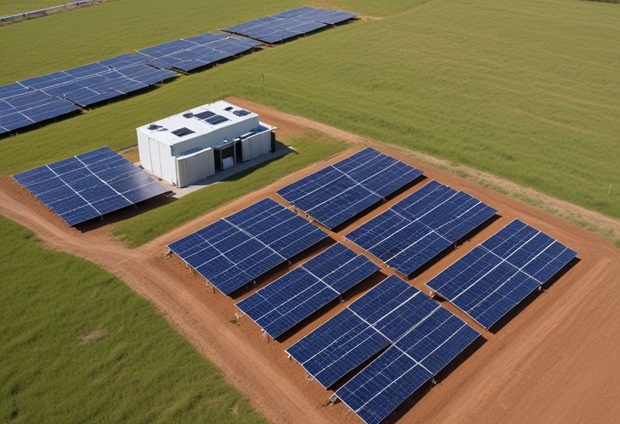In line with Government’s vision to promote Renewable Energy in the electricity mix to 60% by 2030, a 20 Megawatt (MW) Grid-Scale Battery Energy Storage System (BESS), was inaugurated, in presence of the Minister of Energy and Public Utilities, Georges Pierre Lesjongard, this morning, at the Amaury Sub-station.
The Attorney General, Minister of Foreign Affairs, Regional Integration and International Trade, Mr Maneesh Gobin; the Minister of Gender Equality and Family Welfare, Kalpana Devi Koonjoo-Shah; the General Manager of the Central Electricity Board (CEB),Rajden Chowdharry, and several other personalities were also present.
The main purpose of the BESS is to help stabilise the grid frequency in view of incorporating more and more renewable energy on the national grid. Renewable sources such as solar and wind are the two most appropriate for the local context and are typically intermittent in nature. They can thus create instabilities on the grid when connected to same in large amounts (MWs). Hence the need for the BESS to ensure energy management, reduce the wastage of energy and conserve natural resources.
In his address, Minister Lesjongard underlined that the 20 MW BESS is in line with Government’s policy to encourage the use of Renewable Energy and clean energy in view to reduce the country’s dependence on fossil fuels and decrease greenhouse gas emissions by 40% by 2030. He stated that green energy is poised to become a new pillar of the economy as 60% of the country’s energy needs will be produced from green sources by 2030.The use of coal will also be phased out by 2030, he added.
With the advent of the BESS, indicated the Minister, a greater capacity of green energy will be stored and integrated into the national grid to meet growing demand at peak times particularly in the evening. The BESS, he stated, also help reduce our dependence on conventional generators as these batteries are charged with renewable energies such as solar photovoltaic energy, helping to achieve the goal of integrating 60% renewable energies in the energy mix by 2030.
He recalled that the CEB has launched several projects with a view to incorporating more green energy into the grid. The first phase of the project was commissioned in 2018, with a capacity of 2 MW installed at the Amaury sub-station and Henrietta sub-station. 14 MW were distributed to CEB sub-stations located at La Tour Koenig, Anahita, Wooton and Jin fei. All these initiatives are guided by Government’s determination to reduce the country’s carbon emissions and accelerate the phasing out of coal in the generation of electricity, stressed Minister Lesjongard.
For his part, Chowdharry, pointed out that with the coming into operation of the new 20MW BESS, the CEB will avail of a total of 38 MW Grid-Scale BESS. He underscored the main of the organisation which is to ensure sufficient supply of electricity in a timely manner to meet the demands of the population. He thus spoke of the need to lay more emphasis on the exploitation of Renewable Energy sources while encouraging diversification of energy mix and reducing dependence on coal.
This deployment, he noted, is a crucial step towards a stable, resilient national power grid acting as a buffer to minimise frequency and voltage. It also provides “peak shaving” capability to help meet evening peak demand and reduce our dependence on conventional peak generators, indicated Chowdharry.
The 20 MW BESS, to the tune of Rs 700 million, was supplied, installed and commissioned by SIEMENS France, a world leader in industrial electrical and electronic systems including utility-scale battery storage.
The 18 MW BESS comprise the latest lithium ion, high efficiency battery module technology with an extremely low response time of less than twenty milliseconds. They adopt the ‘containerised’ format, that is, they are enclosed in standard size, but customised (mainly in terms of wall structure, sound and weather proofing and reinforcements) containers.

